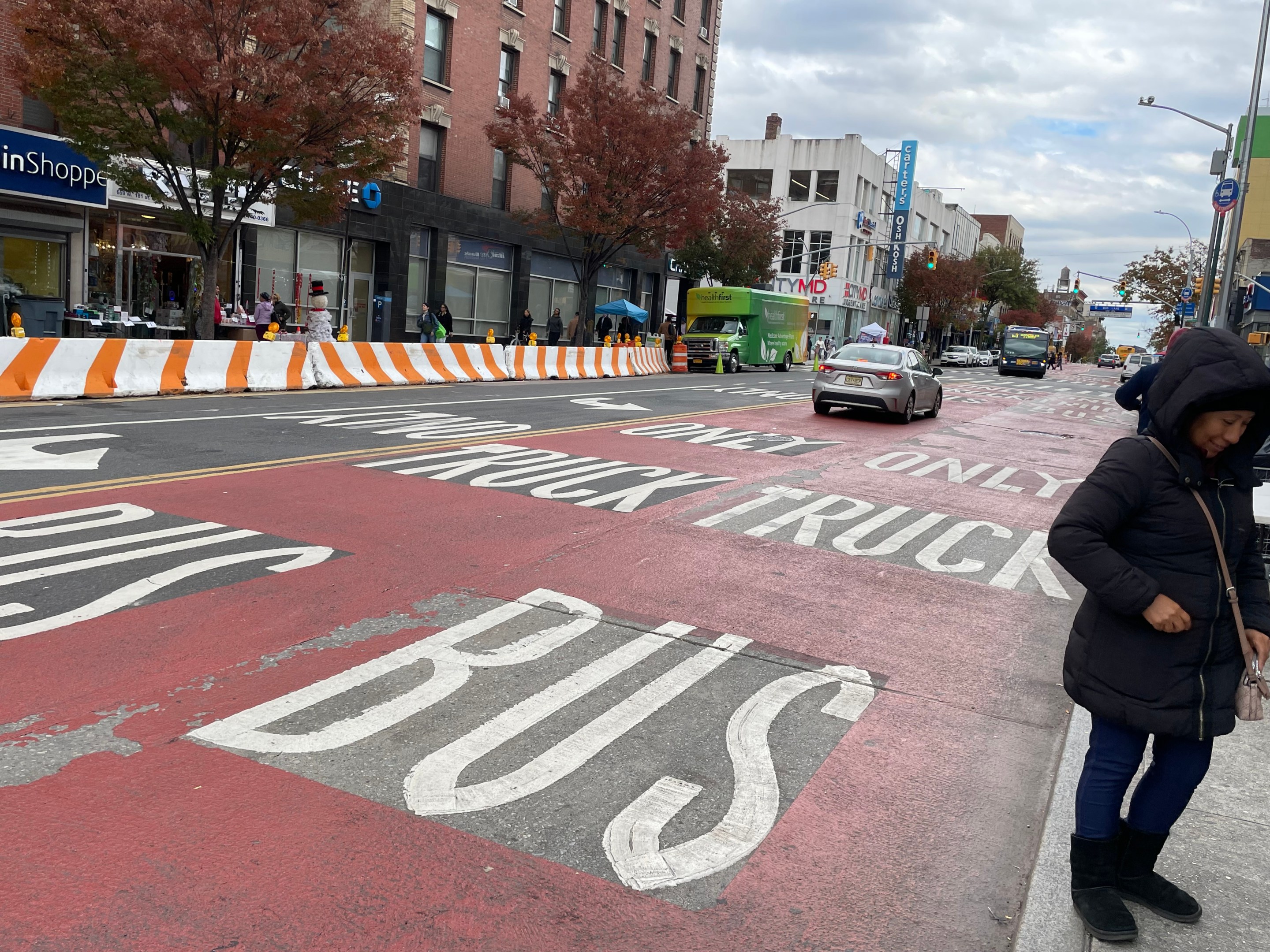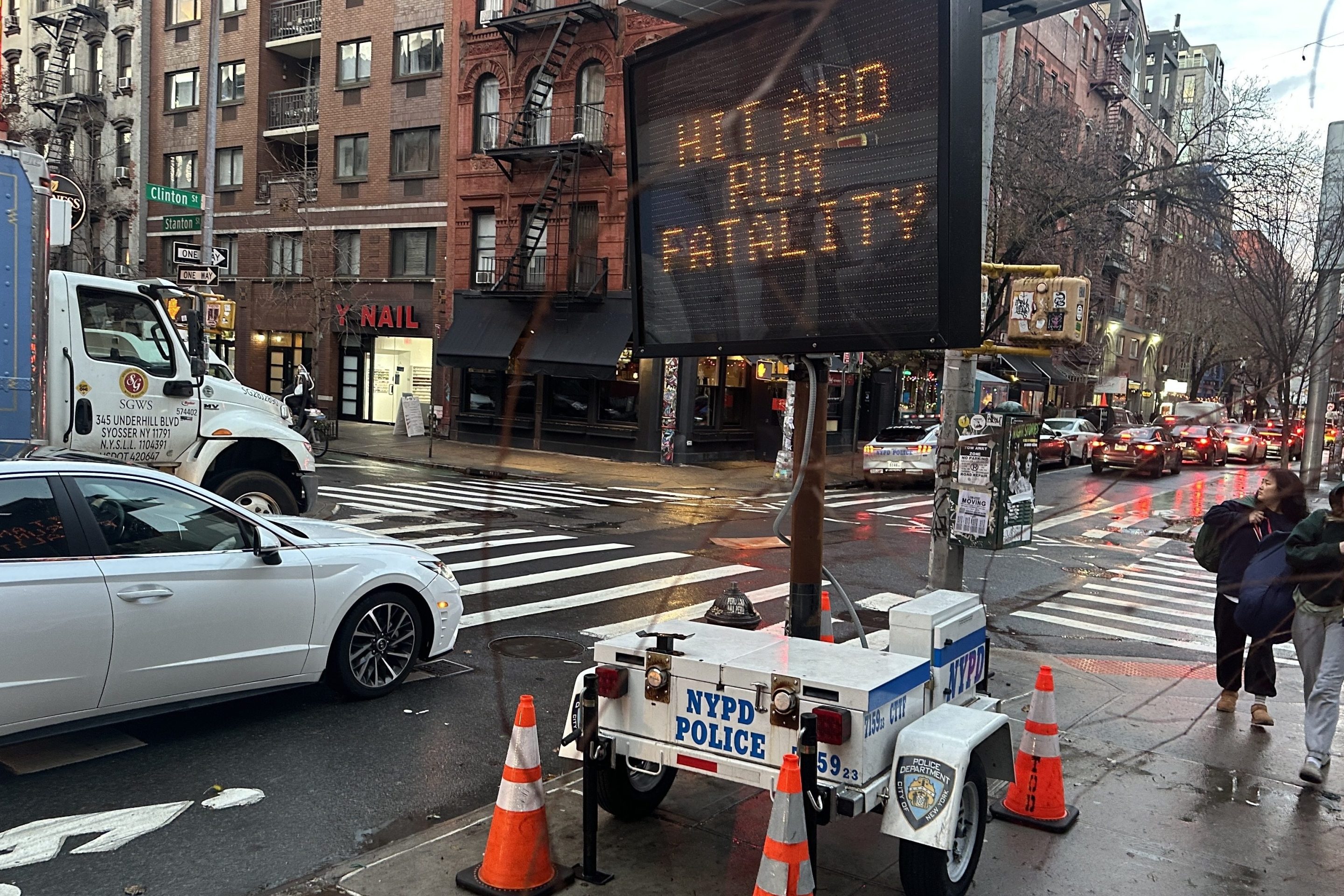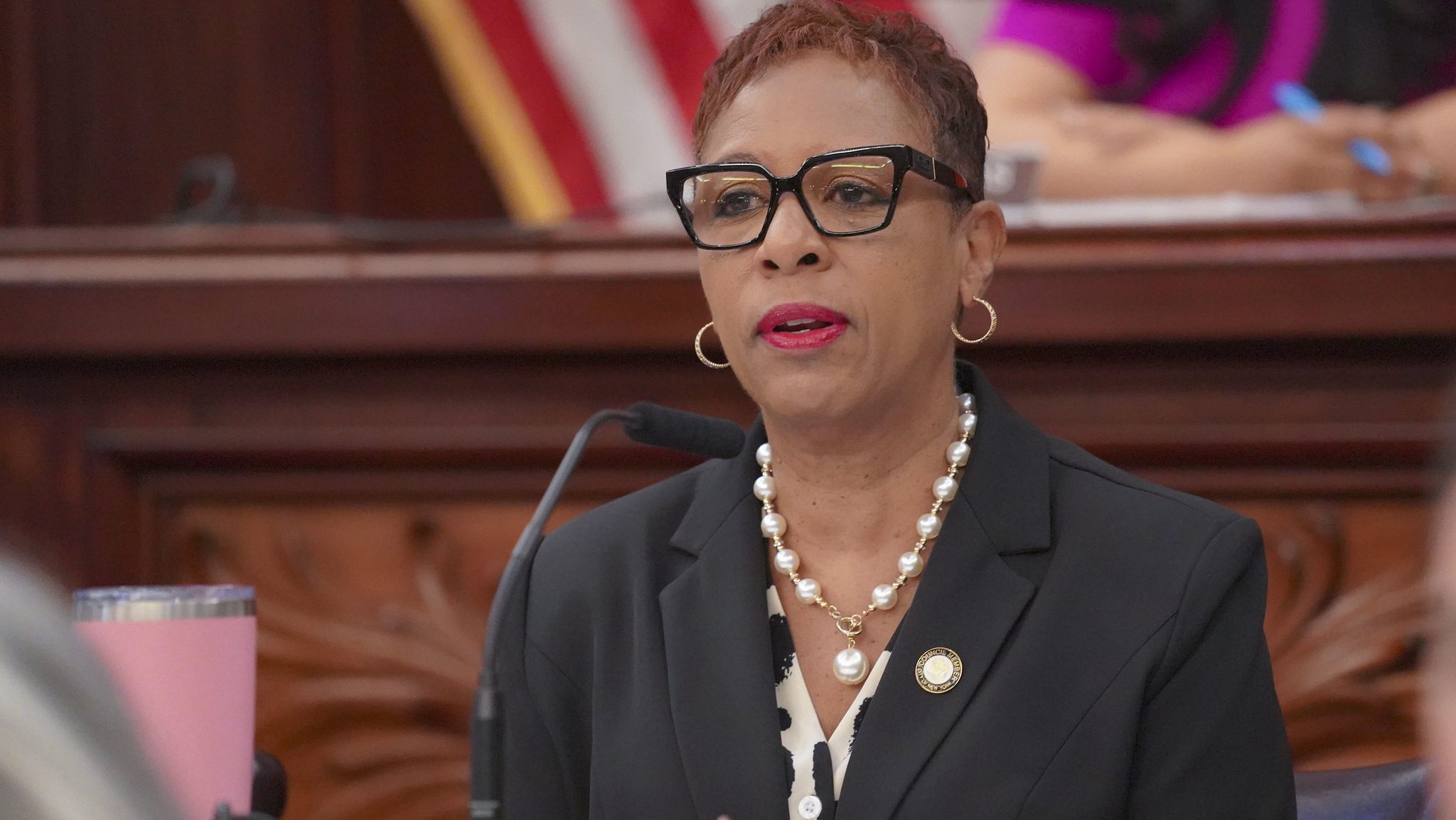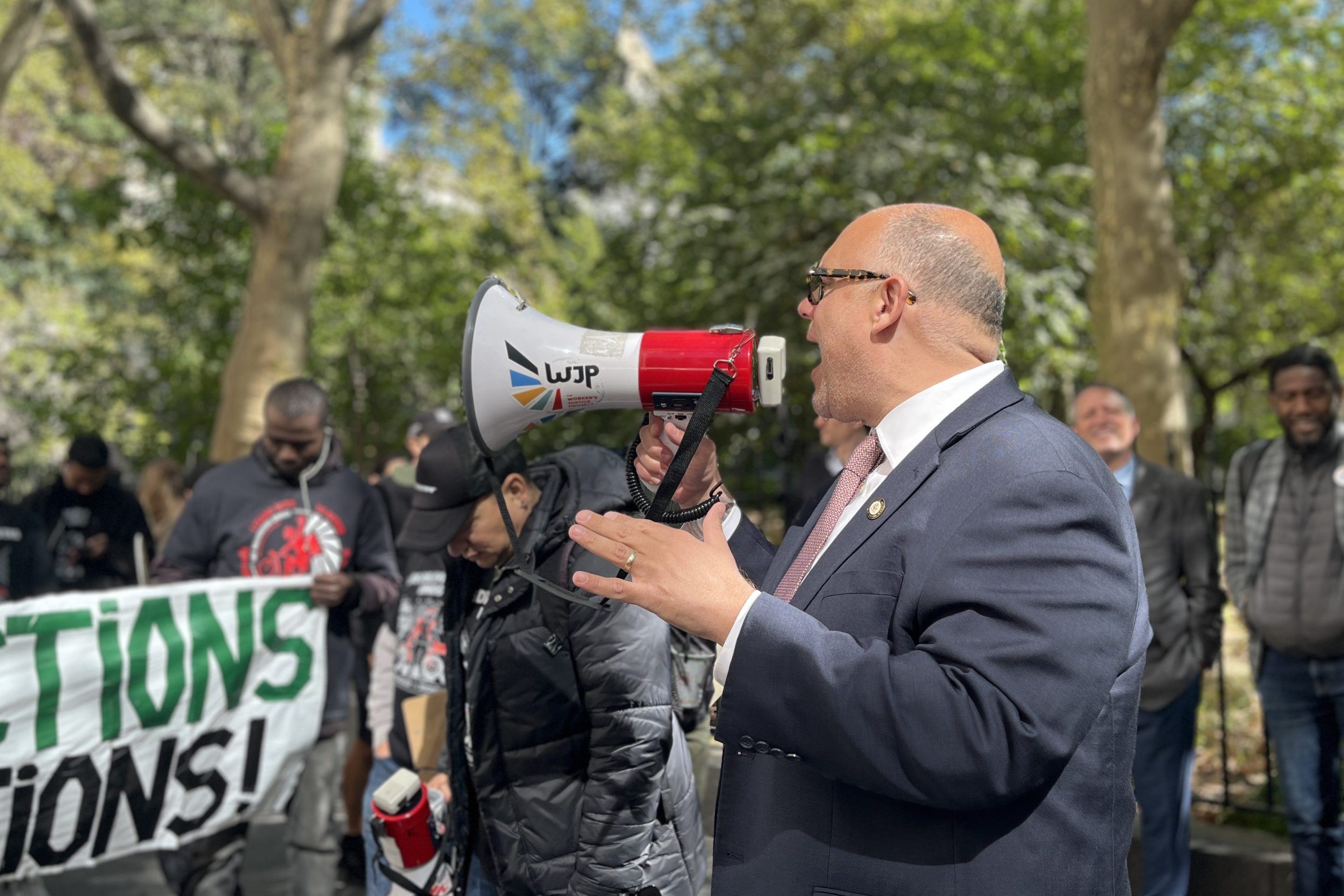The City Council wants the Department of Transportation to show its work.
Amid the Adams administration’s failure to meet legally required benchmarks for bus and bike lane construction, the Council passed two bills on Thursday that would require the DOT to be more transparent regarding the progress (or lack thereof) of street safety projects.
The first, Intro 1105 sponsored by Transportation Committee Chair Selvena Brooks-Powers (D-Arverne), would require the department to publish a “Streets Plan” tracker for capital projects that count towards the benchmarks set in the “Streets Master Plan.” (One flaw: Not all “Streets Plan” projects are “capital projects”; the majority only require painted lanes and plastic bollards, which won’t be tracked under the final version of the bill.)
The second, Intro 1114 sponsored by Council Member Julie Won (D-Long Island City), would require the DOT to publish a more general capital projects tracker. The trackers will interact with each other and be displayed on the same eventual page of the DOT’s site, according to the sponsors.
“The city has consistently fallen short on its milestones [in the Streets Master Plan], including the miles of protected bus and bike lanes required to be built each year,” Council Speaker Adrienne Adams told reporters on Thursday. "The Council has consistently pressed DOT to provide updates on their progress but they have been unwilling to do so. Today’s legislation will advance greater transparency."
Advocates see the two bills as a welcomed move towards transparency.
“Certainly they’re good bills, it’s important to have transparency to progress,” Eric McClure, the executive director of StreetsPAC, the city's only political action committee focused entirely on street safety.
But, as McClure pointed out, tracking is nothing without action to back it up.
“Tracking them is less than half the battle, doing them is the real thing. I’m perfectly happy to see these bills pass, but where the rubber hits the road is having an administration that’s committed to street safety and public transportation and making sure that DOT has the resources to complete these projects in a timely fashion,” he said.
The DOT said it will work to develop the trackers required by law, but that Council Members need to take a lead role in advancing street safety projects in their districts.
“If Council members were serious about street safety, they would stand up and support life-saving street safety projects in their districts, instead of grandstanding and mandating more bureaucratic busy work,” said DOT spokesperson Vin Barone. "You can’t oppose a bike lane in your district on Monday and then grill DOT for not building enough bike lanes on Tuesday."
Indeed, Brooks-Powers recently asked the DOT to remove a bike lane in her district, just hours after she pressed the DOT at a hearing about its failure to meet the milestones.
The Streets Master Plan requires the DOT to hit specific benchmarks for bike lane (currently 50 miles per year) and bus lane (30 miles) construction. In 2024 the city built roughly 29.3 miles of protected bike lanes and installed or updated 17.9 miles of protected bus lanes – far from both requirements.
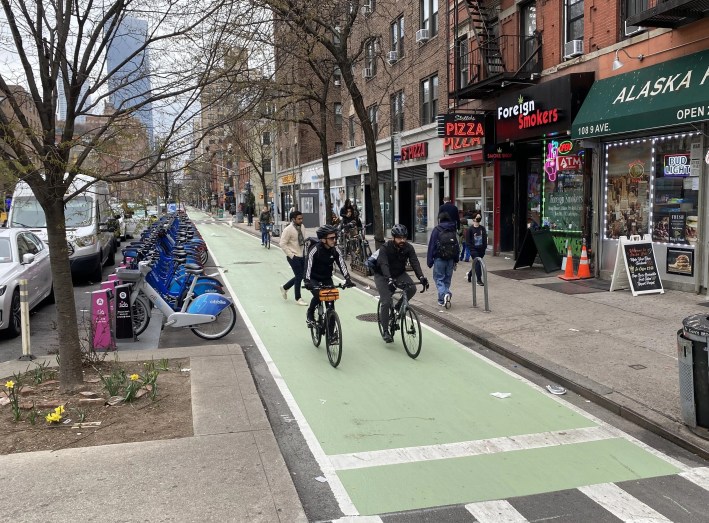
Currently if New Yorkers want to get information about DOT projects there are three main channels (aside from reading Streetsblog, of course). The DOT’s “current projects” dashboard gives an overview of projects the department is working on and links to presentations given to community boards — though it often takes years from presentation to completion.
The city’s capital project dashboard, which is maintained by the Mayor’s Office of Operations, shows progress on capital projects from all agencies.
Won and Brooks-Powers said they wanted to simplify the process of monitoring the department’s progress.
“Any sort of public-facing transparency interface should be easily accessible to the public. Currently, the tracker is not something that’s intuitive. Just like how the Parks Department has a Parks capital project tracker that is very user friendly and easy to navigate, we want to ensure that there is a public facing tracker meant for public use, specifically for DOT projects," Won said at Thursday's press conference.
Both Won and Brooks-Powers have sparred with DOT recently, but from opposite sides. Won has been pushing to get the department to install a separate pedestrian path on the Queensboro Bridge – which has been held up by Mayor Adams, but Brooks-Powers has asked DOT to remove a protected bike lane in her district and routinely criticizes bike lanes.
The DOT testified publicly against the idea of a tracker, saying that much of the work of the Streets Plan happens in bursts due to weather, not as long gradual projects, giving a tracker little practical use. The public testimony against the tracker flies in the face of Mayor Adams's own mantra: "Mom always said, 'You have to inspect what you expect.'"
Won also pushed back on DOT's contention that it can't build a project unless the local Council member supports it.
"[DOT Commissioner Ydanis Rodriguez] knows very well that no Council Member votes on where a bike lane is placed or where a rapid bus lane is going to be placed," she said. "Whether there is politics involved or not, it is [the DOT's] responsibility to take their capital plan and implement it."
But politics does often play a role, which is why McClure suggested a different kind of tracker: of the pols themselves.
“There's a lot of people in the Council who think the Streets Plan goals should be met ... but in somebody else’s district," he said. "So if DOT is behind on meeting bus lane or bike lane miles I’d like to know who and why is causing that to happen. In more than a few instances it's some Council member throwing a tantrum about having parking spaces removed for a busway or a protected bike lane."
